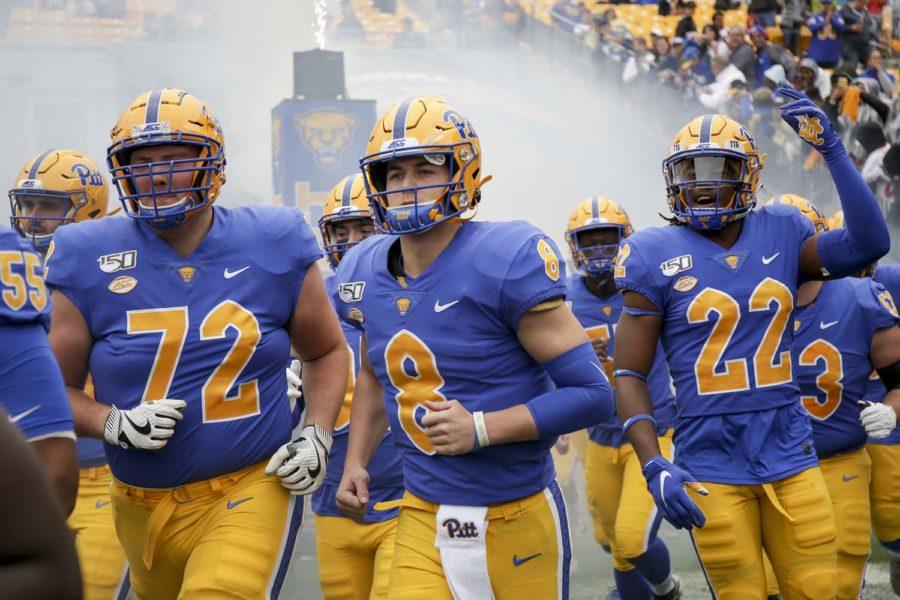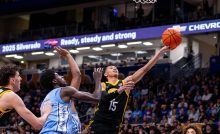Point-Counterpoint: College football this fall is too dangerous


Due to COVID-19, a football season is questionable for the Panthers.
This column is part of a point-counterpoint series. To read the opposing view, click here.
It’s the hottest topic in sports right now.
Try turning on ESPN tomorrow and see if you can make it 30 minutes without hearing endless speculation about a college football season that frankly everyone knows next to nothing about. We’re less than a week from when college football is set to begin, yet there’s still way more unanswered questions than confirmed adjustments.
We all want a college football season. I’ve enjoyed three amusing years of Pitt football since my arrival in Oakland, and I didn’t expect to spend my first Saturdays of senior year studying instead of consuming college football at unhealthy rates.
I also never expected my senior year to occur amid an unprecedented pandemic that has killed more than 170,000 people in the United States alone, which is why I must be the bearer of bad news and declare that the college football season, as well as every collegiate sports season, should not be played this fall.
Let’s get to the only factor that should matter in this decision — safety during the COVID-19 pandemic. Football, a high-contact sport, requires frequent face-to-face interaction on every single play of the game, as opposing players clash with brutal force for multiple hours at a time. A crowded sideline of sweaty, tired humans view the game beside each other. This isn’t tennis we’re talking about.
Look at this graphic of recommendations for safe participation in sports from the Centers for Disease Control and Prevention.
Think of college football at level three of the scale provided. Players are confined to practicing against their own team, although most practices have featured small amounts of actual team scrimmages, instead doing mostly individual or small-group drills.
Despite the seemingly low level of risk involved in this controlled environment, Power Five football teams across the country have announced multitudes of positive tests from players. By the end of June, more than 30% of Clemson’s roster had contracted the virus within a month of players’ return to campus. An actual season full of mass travel, the highest risk stage of the CDC’s scale, will be a whole different nightmare.
We’ve heard players, fans and even the president of the United States express support for a fall college football season, with some reasonable arguments and some absurd ones. One aspect of the #WeWantToPlay movement suggests that players would actually remain safer in the highly monitored environment of college athletics than if they returned home. While this would be the only sentiment that would justify the season’s resumption, it doesn’t quite seem to add up.
Ryan Marino, who worked with COVID-19 patients as an emergency physician and attained his fellowship in medical toxicology from UPMC, believes college football players put themselves in greater risk if they choose to play, referencing Major League Baseball’s struggle to contain COVID-19 cases so far.
“They did everything,” Marino said. ”It was pretty much incentivized to succeed as safely as possible. I’m sure more resources were put towards that than they’ll put towards college football, and they’ve already had massive outbreaks and spread of infection.”
Unlike baseball, a college football season would see teams of more than 100 players traveling all around the country. If Pitt deems most in-person classes too dangerous until at least Sept. 14, how can it justify playing a football game on Sept. 12? By the end of the season, Pitt will make two road trips to Florida, where more than 600,000 cases have been recorded.
Sheldon Jacobson, a University of Illinois computer science professor whose research has influenced public policy in the past, projects a 30% to 50% infection rate from Football Bowl Subdivision players this season, with three to seven of those infected dying.
“I guarantee someone is going to die,” Jacobson said. “The virus does not discriminate.”
Of course, it all comes down to money. USA Today reported at least $4.1 billion in revenue could be at stake for Power Five athletic departments if a college football season does not occur. But the people at the most risk, the athletes, aren’t employed by the universities. How can unpaid athletes take on these risks while schools ship the rest of their students home for the semester and still maintain the facade of amateurism?
They simply cannot. We will learn the fate of college athletes in the coming weeks, but I hope the ACC follows the Big Ten and Pac-12 in postponing all fall sports competitions before it’s too late.
Recent Posts
SGB introduces new governing code bill and addresses rumors of ICE on campus
At its weekly meeting at Nordy’s Place on Tuesday, Student Government Board introduced an omnibus…
Opinion | School should be in the summer
Although this may be controversial, I believe that from this data, it is evident that…
Weathering the storm: Pittsburgh teams have tackled some of the toughest environments
The end of the year in western Pennsylvania is always marked by two things —…
Notes From an Average Girl // Notes on Book Banning
In this edition of Notes From an Average Girl, senior staff writer Madeline Milchman writes…
To Be Honest // Yup, it is that damn phone
In this edition of To Be Honest, staff writer Evin Verbrugge writes about her phone…
Meaning at the Movies | Portraying Toxic ‘Adolescence’
In this edition of Meaning at the Movies, staff writer Lauren Deaton explores the mini-series…

